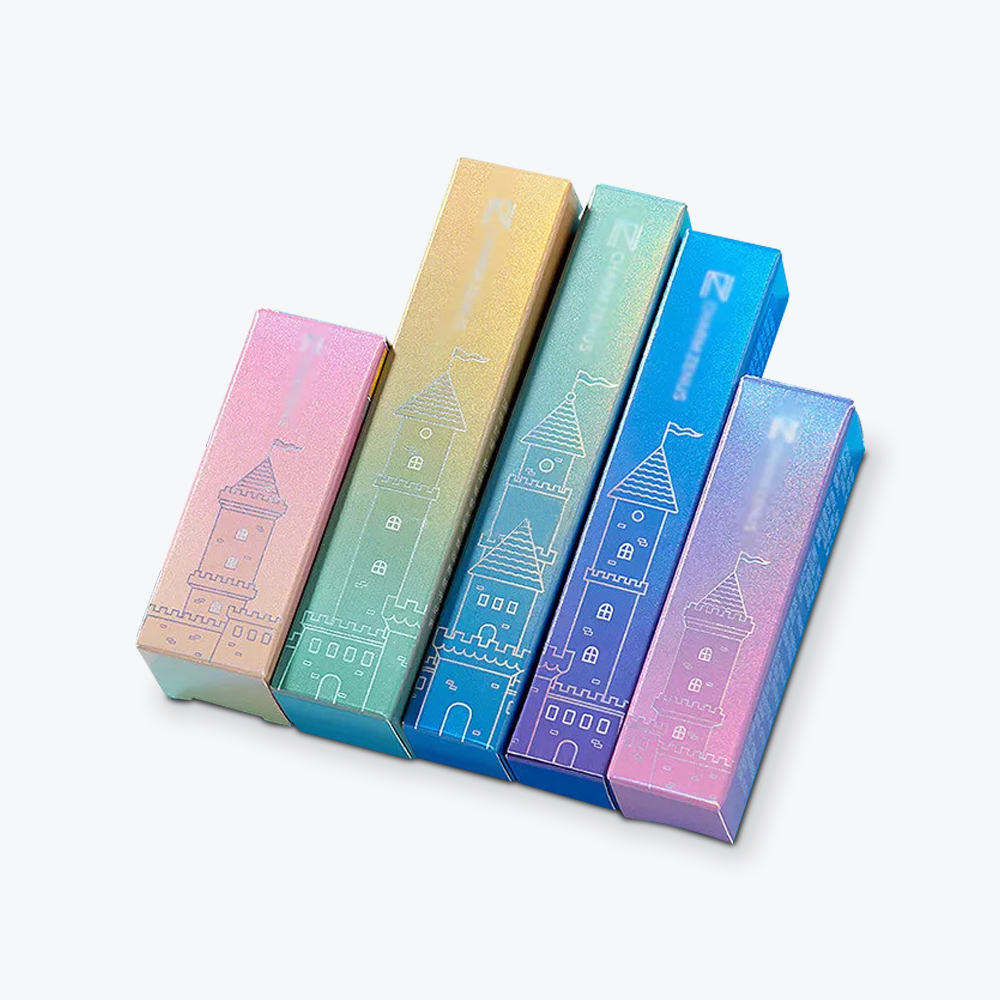The subscription box is an e-commerce marketing technique and distribution method involving the regular delivery of items selected according to a customer’s preferences.
Before the subscription model, businesses offered club memberships to introduce their latest offerings without pushing for physical store visits. With subscription boxes, various items from beauty or grooming products and pet food to clothing, books, and “loot crates” for gamers conveniently arrive at one’s doorsteps monthly, quarterly, or other recurring timeframes.
But life is now returning to the “old normal.” In-store shopping is in high gear – with 61% of consumers preferring to shop in person to view or try on the items they’re purchasing – and inflationary costs are rising. Consequently, subscription boxes are no longer the obsession they used to be, but are still widely used. How can your product offerings stay relevant and attract new customers? By understanding this business model’s success drivers and packaging basics, it’s still possible to plan and launch your themed box idea.
Subscription Box Categories

The three subscription box categories explain the appeal of this shopping model.
Access
Membership subscriptions boost the idea of being special, as certain items are only exclusive or limited to subscribers. A recent survey showed that being able to “try something new” is the top reason why up to 51% of U.S. shoppers get subscription boxes. Retailers sometimes include their latest offering in their monthly boxes for members to test, which could mean pre-launch access and a chance to purchase earlier than commercial distribution.
Curation
Who wouldn’t want to receive a “mystery gift” every month for the rest of the year? The surprise factor is the idea behind curated subscriptions, which offer something new in every shipment. This option builds up the anticipation to unravel and discover something novel and personalized, making it a wonderful gift idea for friends or oneself.
Replenishment
Also known as the “subscribe and save” category, replenishment subscriptions provide consumers with a fresh supply of their chosen product once it runs out (vitamins, soap, beverages, and so on). Shoppers gain peace of mind knowing they won’t run out of stock of their favorite items. They also skip the hassle of placing a new order because subscriptions are recurring.
Moreover, buyers can also save on costs, as some—if not all—products are on discount as part of the subscription.
Factors to Consider in Choosing Your Subscription Box Packaging

You can tailor-fit your subscription box to match your brand’s marketing goals and keep your product intact during transit. Here are the factors you must consider when selecting your packaging:
You can choose from various box types to ship your product:
- Folding carton boxes are for single-item, lightweight products.
- Mailer boxes are heavier and sturdier than paperboard boxes.
- Shipping boxes made of corrugated cardboard are heavier than mailer boxes. In many cases, customized shipping boxes are your best option if you’re going for an original look and feel that suits your product protection and budget goals.
- Rigid boxes for heavy and premium or luxury products.
Choose a type robust enough that it won’t tear under your item’s weight.
You must know what items will go into your subscription box to determine the appropriate size. Take the dimension of your box’s contents: weight, length (side-to-side), width (front-to-back), and depth (top-to-bottom). Also, consider how fragile or durable they are.
A box slightly larger than your product is better than one in which your product barely fits. You can put fillers in the space around your item, particularly for breakable and easily deformed or punctured contents. However, the box shouldn’t be too big that products would jiggle inside. Furthermore, consider that larger boxes can add to shipping costs.
3. Packaging Extras
People love unboxing. On Instagram, when you search for #unboxing, over 4 million posts will show up. To enhance your subscribers’ unboxing experience, you can choose to enhance the interior of your subscription box with the following:
Inlays

Inserts provide perfect-fitting holders for your products, reducing the chances of items breaking or getting tossed around during shipment.
Dividers

Create compartments inside your box to improve the presentation of various products, especially to keep several small items of the same kind in separate spaces.
Padding
Such as bubble wrap, air pillows, and crumpled kraft paper prevent dents and other damage on your item.
Custom Tissue Paper
Acts like a gift wrap that covers your product inside the box.

Help heighten brand awareness and can prevent tampering if you use them to seal the lid onto the rest of the box. They’re also a cost-effective decor if you opt for plain packaging.
Custom Sleeves

Also known as belly band packaging, custom sleeves serve as 360-degree wrap-around labels for similar items—like a chocolate bar set or egg tray—or boxes, whether plain or printed.
4. Printing Method
The three most common printing methods that packaging service providers currently use are:
- Flexographic printing: Features printing plates containing your design—one plate for each color. They spin on rotating cylinders and “stamp” or transfer the image onto the packaging material. Most corrugated box projects with simple designs use flexographic printing due to speed and clarity, even on corrugated boxes.
- Digital printing: Involves machines that can apply the colored or monochrome design directly on the box’s surfaces. Although more highly recommended for smaller orders, some printing providers can offer this service for large-quantity jobs.
- Lithographic printing: Also known as litho-lamination or offset printing—can be compared to wallpapering. It produces high-resolution designs onto a paper sheet laminated on the packaging box using adhesive. We recommend this method for more intricate designs and photo-quality imagery. Offset printing is also suitable for printing boxes with a metallic finish and Pantone colors.
5. Packaging Designer and Supplier
A designer can help you determine the box structure that can best protect your product from breaking or shifting while at the same time representing your brand and delighting your subscribers. Some packaging suppliers have transit safety (ISTA) certification and offer rigorous box performance testing.
Before deciding to outsource your product box design and printing, be sure to:
- Determine your budget: This will help set the quantity you can order.
- Set your timeline: when you need to get your boxes to provide time for packing and shipping.
Meanwhile, examine the following when choosing a packaging supplier:
- Industry experience
- Range of services and customization (Can it design, print, and ship the boxes you require?)
- Reviews about the supplier’s output quality and customer service (If possible, ask and compare samples from your shortlisted candidates.)
- Response or delivery time
- Pricing, minimum requirement, and if they can keep up with demand
- Use of sustainable kraft and eco-friendly box materials
- Shipping service (warehousing and logistics)
A custom packaging manufacturer such as Refine Packaging can create a unique design, provide prototyping and testing, handle your printing needs, and scale high-quality production as your business grows.
Handling subscription box deliveries can be time-consuming. Find out your options, including working with a fulfillment center if your orders are mounting and you don’t have enough staff to help you with shipping.
Branding Essentials You Should Know

Familiarize yourself with the following design elements to help you work better with your subscription box packaging designer:
Typography
Typography refers to the font your brand uses. It should be readable enough to catch your prospect’s and client’s eye. Besides using an attractive font, your tagline should include catchy words that reflect your brand values.
Copy
Copy refers to descriptions, instructions, and other written information you will include in your packaging.
Logo and Colors
It’s logical to use your logo and brand colors to reinforce your business identity. However, you can play around with your color palette. Check if your designer can draft multiple designs featuring variations of your brand colors. Good designers consider your target audience and market trends (including the competitor’s packaging type or style) when crafting and presenting studies for your review and approval.
Other Visuals
You can include photos of the product inside your box and other details such as vector graphics (that retain their smooth look even if you enlarge them) and patterns (lines, curves, shapes) to help manage subscribers’ expectations about the contents.
Negative Space
Negative spaces are the blank or white spaces around and between images. They add sophistication to packaging and can direct people’s gaze to significant elements like your logo or tagline.
Dieline
The dieline is the flat diagram showing all the cut lines and folds of your packaging box.
Subscription Box Packaging Checklist
Here’s a summary of the packaging details to remember from concept design to shipping:
|
Key Areas
|
Aspects to Consider
|
Questions to Ask
|
|
Brand identity
|
Logo, colors, typography, copy, other visuals, printing, packaging material
|
Does my packaging convey my brand values and voice?
|
|
Visual appeal
|
Box type, size, shape, design, designer’s experience and capabilities
|
Does the packaging appeal to my target market?
How does it compare to my competitors’ subscription boxes?
|
|
Product protection
|
Durable packaging material, padding, dividers
|
Is the packaging sturdy enough to protect my product during transit?
|
|
Printing
|
Technique to use (flexographic, digital, or lithographic), supplier’s pricing, capabilities, and requirements (minimum box volume, availability of preferred packaging material, turnaround time)
|
What’s the best packaging material and printing technique to use based on my goals and budget?
How many boxes do I need? How can I save on costs?
Can my supplier show or send me a sample?
Can my supplier produce a prototype?
|
|
Shipping
|
Timelines, courier or fulfillment center requirements
|
How soon can my supplier deliver the boxes?
How soon can I ship the boxes after packing?
Should I ship the boxes or work with a fulfillment center?
|
|
“Share-worthiness”
|
Box design, packaging, clear printing, personalized message card and other extras, digital influencers following your brand
|
Is the box easy to open?
Is the printing quality crisp and smooth, with readable text?
Does it contain labels, cards, or other printed materials inside that convey personalization?
|
Examples of Subscription Boxes
The most sought-after subscription boxes are visually appealing and structurally sound. Although the following examples mainly received good reviews for their content, their designs are also worth studying:
Universal Yums

Universal Yums’ subscription box—a custom end-open mailer box—features a set of various snack packets from a different country each month. The exterior design features blue-colored sweet treats set on a white background, building on the same colors as the Universal Yums logo. The two-toned design provides a good balance to its multi-colored contents, which include a country map and a guidebook about the featured nation’s top destinations, culture, fun trivia, and a local recipe. The box is available in three sizes: Yum Box with five to seven snacks, Yum Yum Box with 10 to 12 snacks, and Super Yum Box with 15 to 18 snacks. Shoppers can subscribe annually or send it as gifts (once or monthly for three, six, or 12 months).
Jot Coffee

Only Jot Ultra Coffee’s rabbit logo in gold foil appears outside the box in solid black. Inlays secure the bottles and a silver spoon. Newer subscription boxes contain dividers to separate the bottles and drinking glasses, which are among the welcome gift options for first-time subscribers.
Unlike Universal Yums, Jot uses two-sided printing, which gives the box a luxurious feel, although it doesn’t use a rigid box. Subscriptions provide 25% savings on its 200-ml bottles of concentrated liquid coffee.
Gardyn

Gardyn claims you don’t need to have a green thumb to succeed at indoor gardening when you sign up for its monthly kit of salad vegetables you can grow using its proprietary hydroponic system.
The company uses one rigid box to deliver ABS plastic columns, which hold several “yCubes” or pods with seeds and rockwool—”a natural, rock-based growing medium”—inside (packed in their own box), a six-gallon water reservoir that serves as the base, and other accessories.
A separate narrower rigid box contains poles that provide simulated lighting for the plants. The Gardyn app guides subscribers through their gardening journey with the help of AI assistant Kelby, which monitors the plant’s health using the cameras on the light poles.
Subscription Box: History and Forecast
The subscription box trend began at the heels of Netflix’s 2007 launch of its streaming service when Harvard Business School fellow grads Katia Beauchamp and Hayley Barna launched Birchbox in 2009. Subscribers received designer beauty products—mostly in miniature size—for a $10 monthly fee. By mid-2010 onwards, more sellers adopted the concept, offering consumers more product-type subscription options. Ipsy and Dollar Shave became Birchbox’s top rivals.
The COVID-19 lockdowns in 2020 boosted the industry as followers of Instagram and YouTube influencers became captive audiences for unboxing videos. Large companies such as Walmart, Target, and Amazon and niche retailers like Wayfair, which hopped on the trend before the pandemic, drew more subscribers as people turned to safe and reliable shipping of home staples and hobby items when stay-at-home orders were in force.
The International Market Analysis Research and Consulting Group’s latest report shows that the global subscription box market was worth $28.1 billion in 2022 and may hit $73.6 billion by 2028. The report adds that the top challenges facing current and incoming players are fierce competition amid market saturation and a lack of long-term agreements with vendors, which could threaten standardization and spike prices.
How to Sustain Your Subscription Box Business

High prices are making 60% of Americans abandon the subscription box habit. Thus, you must make your target market feel they’re getting more value for their money by signing up or staying subscribed. Here are some ways you can activate or reignite the addiction for your recurring box:
1. Reward subscribers
You can integrate a loyalty program into your subscription by providing subscribers with access to free merchandise or priority customer support besides early access to new offers and discounts.
2. Collect and analyze feedback
Focus on the first box and what recipients felt upon receiving it. The American Marketing Association advises subscription box providers to combine “concrete” and “emotion”-related questions: “What did you feel when you saw the box’s contents?” (emotional) and “What were your top three thoughts when you tried the products?” (concrete). Avoid seeking extensive comments about their second box. Instead, build up interest for the next box.
3. Offer a preview about the next box without making them lose excitement
You can inform subscribers in advance about a specific product in the upcoming box but not the entire kit. Rotate the product category or any aspect of the box that you’d like to preview every month.
4. Diversify
If you’re not a brand owner but depend on suppliers for your subscription box’s contents, you may consider diversifying your offers just like what leading providers are doing. For instance, Blue Apron has launched one-off party boxes for Thanksgiving and special occasions and an online cookware and wine shop.
5. Keep a tab on trends
Hyper-personalization, higher demand for men’s boxes, and influencer marketing will continue to prevail in the subscription box sector in the short term. Stay abreast with new developments, including smart packaging technology. Examples include QR codes to access digital content describing the product or augmented reality, active (shelf life-extension) packaging, as well as radio frequency identification, and embedded barcodes to prevent tampering and counterfeiting.
Create FOMO with Unforgettable Custom Subscription Boxes

Consumers can fear missing out on your subscription box with the help of targeted messages and customized packaging. But since the unboxing experience is the main draw of your subscription offer, getting your packaging right becomes the top priority.
Refine Packaging can assist from conceptualization to mass box production. We aim to provide as many options as possible and simplify the process so you can see your idea materialize in the shortest time possible.
Select from our array of custom box industries and products, or let us know your concept so our designers can work with you. We use various printing techniques and offer 2D and 3D mockups of your packaging. Our team can send you a sample so you can verify if the prototype matches your vision.
But don’t just take our word for it—discover how the Refine Packaging process has delivered successful customer stories for 1,000s of satisfied brands and their clientele. Contact us for a free quote today, and our packaging specialist will connect with you shortly.









































.svg)
Share